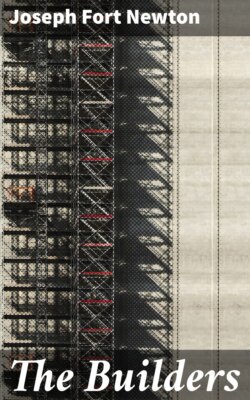Читать книгу The Builders - Joseph Fort Newton - Страница 19
На сайте Литреса книга снята с продажи.
I
ОглавлениеThere were many variations on this theme as the drama of faith evolved, and as it passed from land to land; but the Motif was ever the same, and they all were derived, directly or indirectly, from the old Osirian passion-play in Egypt. Against the background of the ancient Solar religion, Osiris made his advent as Lord of the Nile and fecund Spirit of vegetable life—son of Nut the sky-goddess and Geb the earth-god; and nothing in the story of the Nile-dwellers is more appealing than his conquest of the hearts of the people against all odds.[37] Howbeit, that history need not detain us here, except to say that by the time his passion had become the drama of national faith, it had been bathed in all the tender hues of human life; though somewhat of its solar radiance still lingered in it. Enough to say that of all the gods, called into being by the hopes and fears of men who dwelt in times of yore on the banks of the Nile, Osiris was the most beloved. Osiris the benign father, Isis his sorrowful and faithful wife, and Horus whose filial piety and heroism shine like diamonds in a heap of stones—about this trinity were woven the ideals of Egyptian faith and family life. Hear now the story of the oldest drama of the race, which for more than three thousand years held captive the hearts of men.[38]
Osiris was Ruler of Eternity, but by reason of his visible shape seemed nearly akin to man—revealing a divine humanity. His success was chiefly due, however, to the gracious speech of Isis, his sister-wife, whose charm men could neither reckon nor resist. Together they labored for the good of man, teaching him to discern the plants fit for food, themselves pressing the grapes and drinking the first cup of wine. They made known the veins of metal running through the earth, of which man was ignorant, and taught him to make weapons. They initiated man into the intellectual and moral life, taught him ethics and religion, how to read the starry sky, song and dance and the rhythm of music. Above all, they evoked in men a sense of immortality, of a destiny beyond the tomb. Nevertheless, they had enemies at once stupid and cunning, keen-witted but short-sighted—the dark force of evil which still weaves the fringe of crime on the borders of human life.
Side by side with Osiris, lived the impious Set-Typhon, as Evil ever haunts the Good. While Osiris was absent, Typhon—whose name means serpent—filled with envy and malice, sought to usurp his throne; but his plot was frustrated by Isis. Whereupon he resolved to kill Osiris. This he did, having invited him to a feast, by persuading him to enter a chest, offering, as if in jest, to present the richly carved chest to any one of his guests who, lying down inside it, found he was of the same size. When Osiris got in and stretched himself out, the conspirators closed the chest, and flung it into the Nile.[39] Thus far, the gods had not known death. They had grown old, with white hair and trembling limbs, but old age had not led to death. As soon as Isis heard of this infernal treachery, she cut her hair, clad herself in a garb of mourning, ran thither and yon, a prey to the most cruel anguish, seeking the body. Weeping and distracted, she never tarried, never tired in her sorrowful quest.
Meanwhile, the waters carried the chest out to sea, as far as Byblos in Syria, the town of Adonis, where it lodged against a shrub of arica, or tamarisk—like an acacia tree.[40] Owing to the virtue of the body, the shrub, at its touch, shot up into a tree, growing around it, and protecting it, until the king of that country cut the tree which hid the chest in its bosom, and made from it a column for his palace. At last Isis, led by a vision, came to Byblos, made herself known, and asked for the column. Hence the picture of her weeping over a broken column torn from the palace, while Horus, god of Time, stands behind her pouring ambrosia on her hair. She took the body back to Egypt, to the city of Bouto; but Typhon, hunting by moonlight, found the chest, and having recognized the body of Osiris, mangled it and scattered it beyond recognition. Isis, embodiment of the old world-sorrow for the dead, continued her pathetic quest, gathering piece by piece the body of her dismembered husband, and giving him decent interment. Such was the life and death of Osiris, but as his career pictured the cycle of nature, it could not of course end here.
Horus fought with Typhon, losing an eye in the battle, but finally overthrew him and took him prisoner. There are several versions of his fate, but he seems to have been tried, sentenced, and executed—"cut in three pieces," as the Pyramid Texts relate. Thereupon the faithful son went in solemn procession to the grave of his father, opened it, and called upon Osiris to rise: "Stand up! Thou shalt not end, thou shalt not perish!" But death was deaf. Here the Pyramid Texts recite the mortuary ritual, with its hymns and chants; but in vain. At length Osiris awakes, weary and feeble, and by the aid of the strong grip of the lion-god he gains control of his body, and is lifted from death to life.[41] Thereafter, by virtue of his victory over death, Osiris becomes Lord of the Land of Death, his scepter an Ank Cross, his throne a Square.
